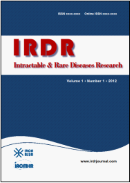BioScience Trends. 2014;8(1):59-63.
Stroke volume variation fail to predict fluid responsiveness in patients undergoing pulmonary lobectomy with one-lung ventilation using thoracotomy.
Fu Q, Zhao F, Mi WD, Zhang H
The purpose of this study was to investigate the ability of stroke volume variation (SVV) to predict fluid responsiveness in patients undergoing pulmonary lobectomy with onelung ventilation (OLV). Thirty patients intubated with double-lumen tube were scheduled for a pulmonary lobectomy requiring OLV for at least 1 hour under general anesthesia. Hemodynamic variables including heart rate, mean arterial pressure, cardiac index (CI), stroke volume index (SVI), central venous pressure (CVP) and SVV were measured before and after volume expansion (VE) (8 mL/kg of 6% hydroxyethyl starch). Fluid responsiveness was defined as an increase in CI ≥ 10% after VE. Of the 30 patients, 16 (53%) were responders and 14 (47%) were nonresponders to intravascular VE. There were significant increases of CI, SVI in responders after VE (p < 0.01), but there were no significant changes in SVV in responders and nonresponders (p > 0.05). The baseline value of SVV, CVP, CI and SVI did not correlate significantly with ΔCI (p > 0.05). The area under the Receiver Operating Characteristic (ROC) curve were 0.507 for SVV (95% confidence interval, 0.294-0.720) and 0.556 for CVP (95% confidence interval, 0.339-0.773), neither was able to predict fluid responsiveness with sufficient statistical power. SVV measured by the Vigileo-FloTrac system was not able to predict fluid responsiveness in patients undergoing pulmonary lobectomy with OLV after thoractomy.







